- Benefits of Growing Walnuts
- Growing Walnuts from Nuts
- Choosing the Right Nuts
- Preparation and Planting
- Providing the Optimal Conditions
- 1. Soil
- 2. Sunlight
- 3. Watering
- 4. Fertilizer
- 5. Mulching
- 6. Pruning
- 7. Pest and Disease Control
- No Stratification Needed
- Materials Needed:
- Step-by-Step Guide:
- Understanding Stratification
- Alternative Methods
- Purchasing Pre-Germinated Nuts
- Obtaining Seedlings or Saplings
- Grafting Walnut Trees
- Consulting with Experts
- Caring for Growing Walnut Trees
- 1. Watering
- 2. Fertilizing
- 3. Pruning
- 4. Mulching
- 5. Pest and Disease Control
- 6. Harvesting
- Watering and Fertilizing
- Watering
- Fertilizing
- Question-answer:
- What is stratification?
- Can walnuts be grown from nuts without stratification?
- What are the advantages of growing walnuts from nuts without stratification?
- How should I choose walnuts for planting?
- What is the best time to plant walnuts?
- Video: How To Grow Walnut Akhroot From Seeds.. Germination. Step by step process. Market bought seeds
Growing your own walnut trees can be a rewarding and fruitful venture. Walnuts are not only delicious, but they also provide shade and beauty to your garden. However, the process of growing walnut trees from nuts can seem daunting, especially when it comes to the step of stratification. Thankfully, there is a way to grow walnuts without having to go through the stratification process.
Stratification is a process in which seeds are subjected to a period of cold and damp conditions to simulate winter, which helps to break the seed dormancy and encourage germination. While this is usually necessary for growing walnuts, there is a workaround that eliminates the need for stratification altogether.
The trick is to harvest fresh walnuts in the fall and plant them immediately. By collecting walnuts directly from the tree, you can skip the stratification step entirely. Look for walnuts that are fully mature, with a hard shell and no signs of damage. It’s best to gather a few extra nuts in case some don’t germinate.
Once you have collected the walnuts, prepare a well-draining container filled with a mix of potting soil and compost. Place the walnuts about an inch deep into the soil, spaced a few inches apart. Water the soil thoroughly and keep it consistently moist. In a few weeks, you should see the sprouts emerging from the soil.
Note: It’s important to keep in mind that growing walnuts from nuts without stratification may yield a lower germination rate compared to stratified seeds. However, this method is still worth a try, especially if you don’t have the time or resources for the stratification process. Remember to provide your walnut saplings with adequate sunlight and water, and watch as they grow into beautiful and productive trees.
Benefits of Growing Walnuts
- Rich Nutritional Content: Walnuts are packed with essential nutrients like vitamins, minerals, and healthy fats. They are a great source of omega-3 fatty acids, which are important for brain health and reducing inflammation.
- Heart-Healthy: Walnuts have been shown to promote cardiovascular health. They can help reduce LDL cholesterol levels, lower blood pressure, and improve overall heart health.
- Improved Brain Function: The omega-3 fatty acids present in walnuts are beneficial for brain health. They can help improve cognitive function, memory retention, and overall brain function.
- Weight Management: Despite being high in calories, walnuts can be beneficial for weight management when consumed in moderation. Their high fiber and protein content can help keep you feeling full for longer, reducing overall calorie intake.
- Antioxidant Properties: Walnuts are rich in antioxidants, which help protect the body’s cells from damage caused by free radicals. This can help reduce the risk of chronic diseases like cancer and improve overall health.
- Lower Risk of Diabetes: Adding walnuts to your diet may help lower the risk of developing type 2 diabetes. They can improve insulin sensitivity and help regulate blood sugar levels.
- Bone Health: Walnuts are a good source of minerals like calcium and magnesium, which are important for maintaining strong and healthy bones. Including walnuts in your diet can help prevent conditions like osteoporosis.
- Reduced Inflammation: The omega-3 fatty acids and antioxidants present in walnuts have anti-inflammatory properties. Eating walnuts regularly can help reduce chronic inflammation, which is linked to various health issues.
- Good for Digestive Health: Walnuts contain dietary fiber, which promotes healthy digestion. Including walnuts in your diet can help prevent constipation and promote regular bowel movements.
Growing Walnuts from Nuts
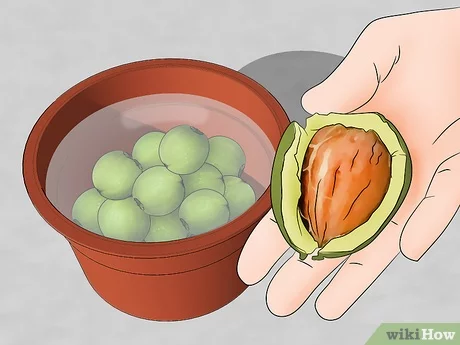
Walnuts can be easily grown from nuts without the need for stratification. Here are the steps to grow your own walnut tree:
- Choosing the Right Nuts: Select healthy walnuts from a reliable source. Make sure the nuts are fresh and not damaged.
- Preparing the Nuts: Gently crack the outer shell of the nuts using a nutcracker. Be careful not to damage the inner walnut kernel.
- Soaking the Nuts: Place the cracked nuts in a bowl of water and let them soak for 24 hours. This helps to remove any inhibitors that may prevent germination.
- Planting the Nuts: Fill a pot or seed tray with well-draining soil. Make a small hole in the soil and place the soaked walnut nut inside. Cover it with soil, leaving a small portion of the nut exposed.
- Caring for the Seedlings: Keep the soil moist but not waterlogged. Place the pot in a warm and sunny location. It may take several weeks for the seedling to emerge.
- Transplanting the Seedling: Once the seedling has grown a few inches in height, it can be transplanted into a larger pot or directly into the ground. Make sure to choose a location with full sun and well-draining soil.
- Maintaining the Walnut Tree: Water the tree regularly, especially in dry periods. Fertilize the tree annually with a balanced fertilizer. Prune the tree to maintain its shape and remove any dead or diseased branches.
- Harvesting the Walnuts: The walnut tree will start producing nuts after several years. Harvest the nuts when the outer hulls start to split open. Remove the outer hulls and let the nuts dry in a cool, dry place for a few weeks.
By following these steps, you can successfully grow your own walnut tree from nuts without the need for stratification.
Choosing the Right Nuts
When it comes to growing walnuts from nuts, it is crucial to choose the right nuts to ensure successful germination and growth. Here are some factors to consider when selecting nuts:
- Variety: Different walnut varieties have different characteristics, such as size, flavor, and climate adaptability. Choose a variety that is known to thrive in your specific climate and soil conditions.
- Freshness: Fresh nuts have a higher chance of germination compared to older nuts. Look for nuts that have a plump and firm shell without any signs of molding or cracking.
- Size: Select nuts that are of average size or larger, as they tend to have a higher chance of producing viable seedlings.
- Undamaged: Choose nuts that are free from physical damage, such as cracks or holes. Nuts with intact shells have a better chance of successful germination.
- Source: Purchase nuts from a reputable source, such as a nursery or reliable online seller. This ensures that you are getting high-quality nuts that are properly stored and handled.
By considering these factors, you can increase the likelihood of successful germination and growth when growing walnuts from nuts. Remember to handle the nuts with care to avoid damaging the delicate embryos inside.
Preparation and Planting
Before planting walnuts, it is important to prepare the nuts and the planting site. Follow these steps to ensure successful walnut growth:
- Selecting viable nuts: Choose nuts that are mature and free from any damage or disease. Look for nuts with intact shells and without any signs of mold or rot.
- Removing the outer husk: The outer husk of the walnut needs to be removed before planting. Use gloves to prevent staining your hands and clothes, as the husk can leave a dark stain.
- Drying the nuts: After removing the husk, allow the nuts to dry for a few days. This will help prevent any potential rot or fungal growth during planting.
- Choosing a planting site: Walnuts prefer deep, well-draining soil with a neutral pH. Select a sunny location with plenty of space for the tree to grow.
- Preparing the soil: Clear the planting site of any weeds or debris. Loosen the soil and remove any rocks or large clumps. Consider adding organic matter, such as compost, to improve soil fertility.
- Sowing the nuts: Dig a hole that is deep enough to accommodate the root system of the walnut tree. Place the nut in the hole with the pointed end facing up. Cover the nut with soil and lightly pat it down.
- Watering and mulching: After planting, water the area thoroughly to settle the soil around the nut. Apply a layer of mulch around the base of the tree to help retain moisture and suppress weed growth.
- Maintaining the seedlings: Keep the soil consistently moist but not waterlogged. Protect the young seedlings from pests and provide ample sunlight for growth. Once the seedlings have established, continue to water as needed and provide regular care.
Following these steps will give your walnut nuts the best chance of germination and successful growth. With proper care, you can enjoy a thriving walnut tree in your garden or orchard.
Providing the Optimal Conditions
After planting the walnut seeds, it is essential to provide them with the optimal conditions for germination and growth. Here are some factors to consider:
1. Soil
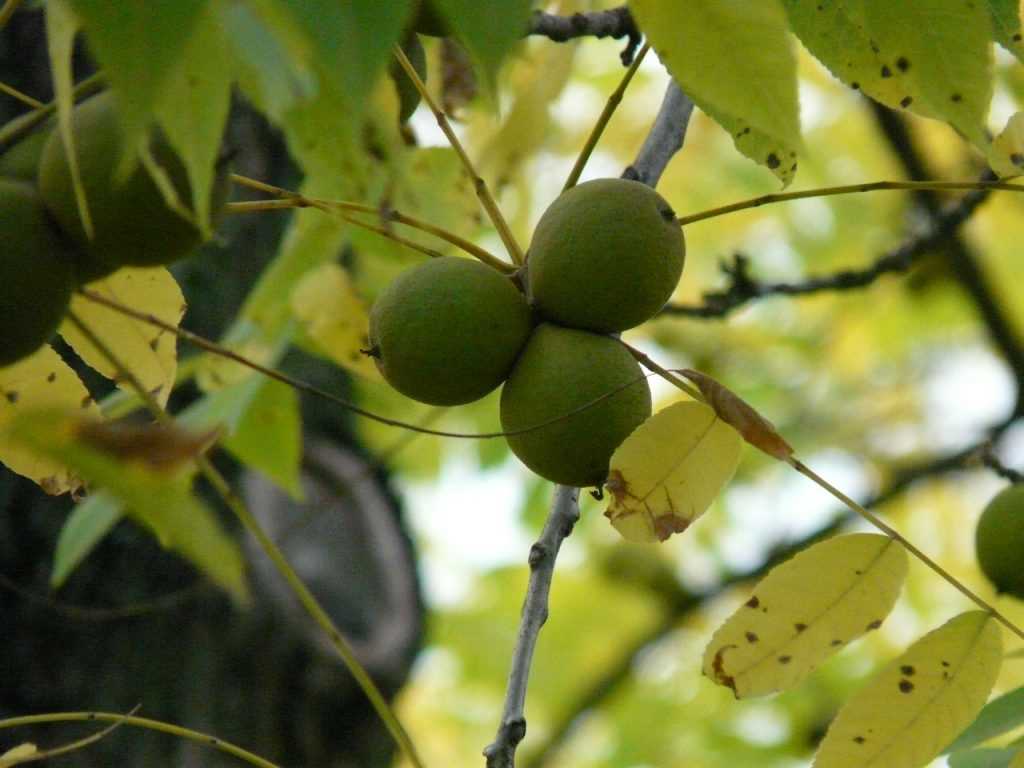
Walnuts prefer well-draining soil with a pH range of 6.0 to 7.5. Before planting, prepare the soil by removing any weeds or grass and loosening it to a depth of at least 12 inches.
2. Sunlight
Walnut trees thrive in full sunlight. Ensure that the planting location receives at least 6 to 8 hours of direct sunlight every day.
3. Watering
For the first year, keep the soil consistently moist but not overly saturated. After the seedlings establish, water them deeply once or twice a week, depending on rainfall and soil moisture levels.
4. Fertilizer
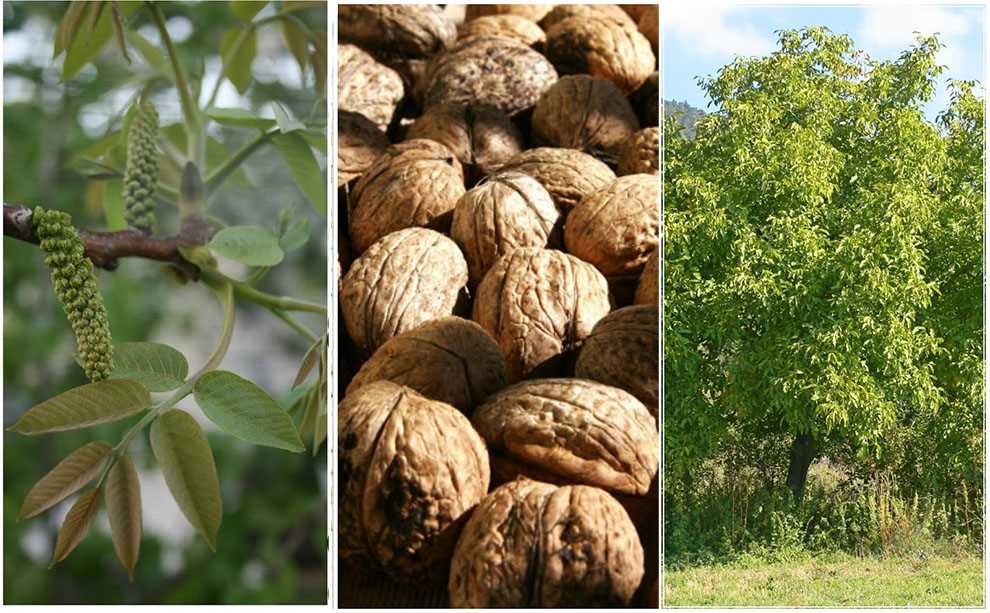
During the first year, you can apply a balanced fertilizer with equal parts nitrogen, phosphorus, and potassium. After the first year, annual applications of organic compost or well-rotted manure can provide sufficient nutrients.
5. Mulching
Apply a 2 to 3-inch layer of organic mulch around the seedlings to help conserve moisture, suppress weeds, and regulate soil temperature. However, make sure to keep the mulch away from the trunks to avoid rot.
6. Pruning
Prune the walnut trees in late winter or early spring to remove damaged, diseased, or crossing branches. This will improve air circulation and overall tree health.
7. Pest and Disease Control
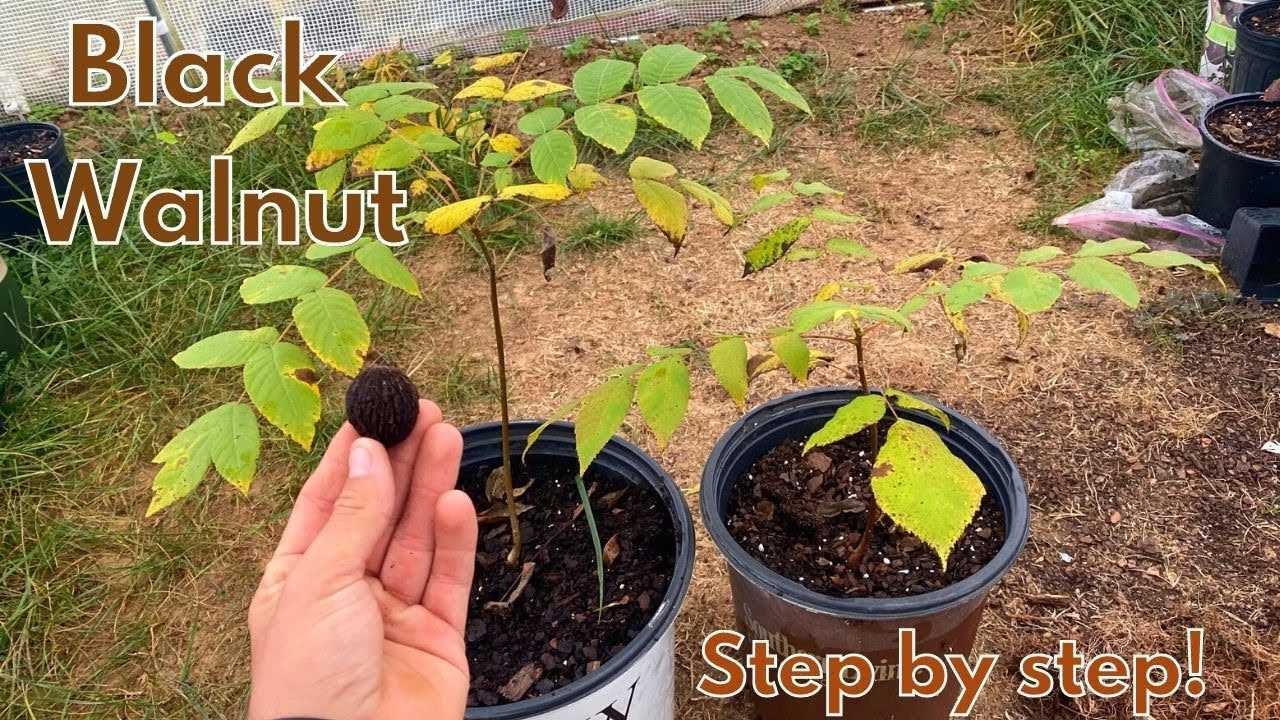
Monitor the walnut trees regularly for pests and diseases such as walnut aphids, codling moths, or walnut blight. Use appropriate organic insecticides or fungicides if necessary.
By providing these optimal conditions, you can ensure the successful growth and development of your walnut trees.
No Stratification Needed
Growing walnuts from nuts typically involves a process called stratification, which is the process of mimicking the natural winter conditions that the nuts would experience if they were left on the ground over the winter. However, there is a method that allows you to grow walnuts from nuts without the need for stratification.
Materials Needed:
- Fresh walnut nuts
- Plastic bags
- Potting soil
- Planting containers
- Water
Step-by-Step Guide:
- Collect fresh walnut nuts from a tree or purchase them from a reputable source.
- Place the walnut nuts in plastic bags and seal them, ensuring that there is some air circulation. Make sure the bags are not airtight to prevent mold or rot.
- Store the sealed bags of walnut nuts in a cool and dark place for a period of three to four months. This will imitate the natural winter conditions and break the dormancy of the nuts.
- After the stratification period, prepare the planting containers by filling them with potting soil.
- Remove the walnut nuts from the plastic bags and wash off any residue or mold.
- Place the walnut nuts in the planting containers, burying them about 1 inch deep in the potting soil.
- Water the soil thoroughly, making sure it’s evenly moist but not saturated.
- Place the planting containers in a warm and sunny location, such as a greenhouse or a sunny windowsill.
- Keep the soil consistently moist and monitor the containers for any signs of growth.
- In about two to three weeks, you should start to see sprouts emerging from the walnut nuts.
- Continue to care for the growing walnut plants by providing them with regular water, sunlight, and fertilization.
- Once the walnut plants have reached a height of 6 to 12 inches, you can transplant them to a larger container or directly into the ground.
By following this method, you can successfully grow walnuts from nuts without the need for stratification. It’s a simple and straightforward process that allows you to enjoy the beauty and benefits of walnut trees in your own garden.
Understanding Stratification
Stratification is a process used to break the dormancy of seeds and stimulate germination. It involves subjecting the seeds to specific temperature and moisture conditions, replicating the natural conditions that seeds would experience in their natural environment over the winter.
Walnuts, like many other tree nuts, require stratification in order to germinate successfully. The nuts contain inhibitors that prevent them from germinating immediately after falling from the tree. These inhibitors need to be broken down through the stratification process before the nuts are able to sprout.
During stratification, walnuts are typically kept in a cool and moist environment for a certain period of time. The temperature and humidity levels are carefully controlled to mimic the conditions of winter in nature. This can be done in a refrigerator, in a container filled with damp sand or peat moss, or in an outdoor location where the seeds are protected from extreme weather.
The duration of stratification required for walnuts varies depending on the species and variety. In general, English walnuts (Juglans regia) typically require a longer stratification period than black walnuts (Juglans nigra). English walnuts may need to be stratified for several months, while black walnuts may only require a few weeks.
During the stratification period, the seeds undergo physiological changes. The chilling temperatures break down the inhibitors in the nut, allowing the embryo to develop and prepare for germination. Once the seeds have completed the stratification period, they can be planted in suitable growing media and provided with proper care to promote germination and growth.
It’s important to note that not all seeds require stratification. Some seeds, such as annual flowers and vegetables, do not have dormancy mechanisms and can be planted directly without stratification. However, for nuts like walnuts, stratification is an essential step for successful germination.
Alternative Methods
If you don’t have access to fresh walnuts or if you prefer to try alternative methods for growing walnuts, there are a few options you can explore:
Purchasing Pre-Germinated Nuts
Some nurseries and online stores offer pre-germinated walnut nuts. These nuts have already undergone the necessary stratification process and are ready to be planted. This can be a convenient option if you want to skip the stratification step and start growing walnuts right away.
Obtaining Seedlings or Saplings
Another option is to purchase walnut seedlings or saplings from a nursery or garden center. These young plants have already gone through the germination and stratification process, so they can be transplanted directly into your garden or orchard. This method allows for faster growth and reduces the risk of failure compared to growing walnuts from nuts.
Grafting Walnut Trees
If you have access to mature walnut trees, you can also consider grafting techniques to propagate new walnut trees. This involves taking a cutting or scion from a desired tree and attaching it to a compatible rootstock. Grafting allows you to maintain the desired characteristics of the parent tree, such as specific nut quality or disease resistance.
Consulting with Experts
If you’re unsure about which method to choose or if you have specific questions about growing walnuts, it’s a good idea to consult with experts in the field. Local agricultural extension offices or horticultural societies can provide valuable guidance and advice based on your specific location and conditions.
Remember that each method has its own advantages and disadvantages, so it’s important to consider your resources, time, and preferences when deciding how to grow walnuts.
Caring for Growing Walnut Trees
Once your walnut tree has started to grow, it is important to provide the proper care to ensure its health and productivity. Here are some important factors to consider:
1. Watering
Walnut trees need regular watering, especially during their first few years of growth. However, be careful not to overwater, as walnut trees prefer well-drained soil. It is generally recommended to water deeply once or twice a week, depending on the weather conditions and soil moisture. Regularly check the soil moisture levels and adjust your watering schedule accordingly.
2. Fertilizing
Walnut trees benefit from regular fertilization to provide them with essential nutrients. In early spring, apply a balanced fertilizer with a ratio of nitrogen, phosphorus, and potassium (NPK) of 10-10-10 or similar. Avoid applying excessive amounts of nitrogen, as this can result in excessive vegetative growth and reduce overall nut production.
3. Pruning
Pruning is an important aspect of walnut tree care, as it helps maintain the tree’s shape, remove dead or diseased branches, and promote airflow and sunlight penetration. Prune your walnut tree during the dormant season, which is typically in the late winter or early spring. Remove any crossed or crowded branches and maintain an open canopy structure.
4. Mulching
Applying a layer of organic mulch around the base of your walnut tree can help conserve soil moisture, suppress weed growth, and improve overall soil health. Use a layer of mulch that is approximately 3-4 inches thick, but avoid piling the mulch against the trunk of the tree, as this can lead to moisture buildup and potential disease issues.
5. Pest and Disease Control
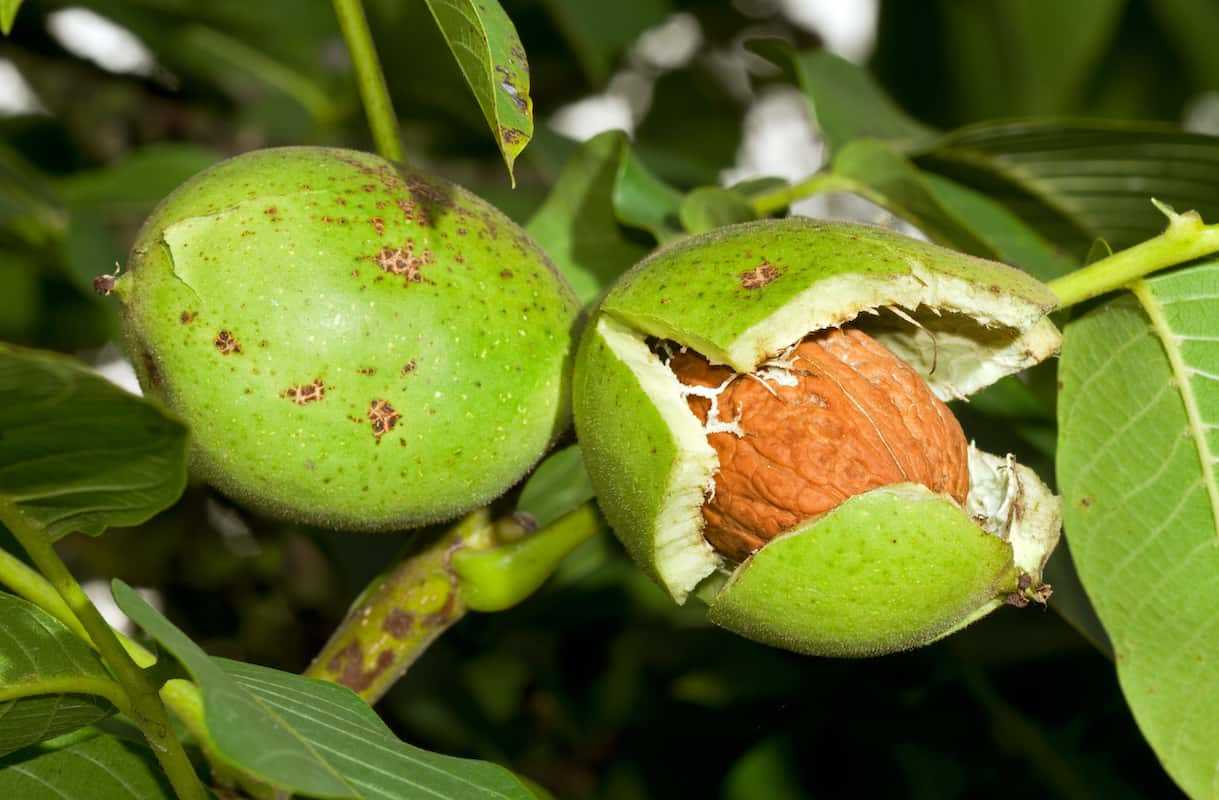
Walnut trees are susceptible to various pests and diseases, so it is important to monitor your tree regularly and take appropriate measures if you notice any issues. Common walnut tree pests include aphids, codling moths, and walnut husk flies. Proper pest management techniques, such as using insecticidal soaps or applying organic insecticides, can help control these pests. Additionally, keep an eye out for signs of diseases such as walnut blight or Crown Gall and consult with a local expert if necessary.
6. Harvesting
Walnut trees typically start producing nuts after 4-7 years of growth. Harvesting generally takes place in the fall when the outer husks of the walnuts have turned brown and start to split. You can collect the nuts from the ground or gently shake the tree to release them. Once harvested, allow the nuts to dry completely before storing them.
By following these care guidelines, you can ensure that your walnut trees grow healthy, produce abundant nuts, and continue to thrive for many years to come.
Watering and Fertilizing
Watering and proper fertilization are crucial for the successful growth of walnut trees. Here are some guidelines to help you properly care for your walnut trees:
Watering
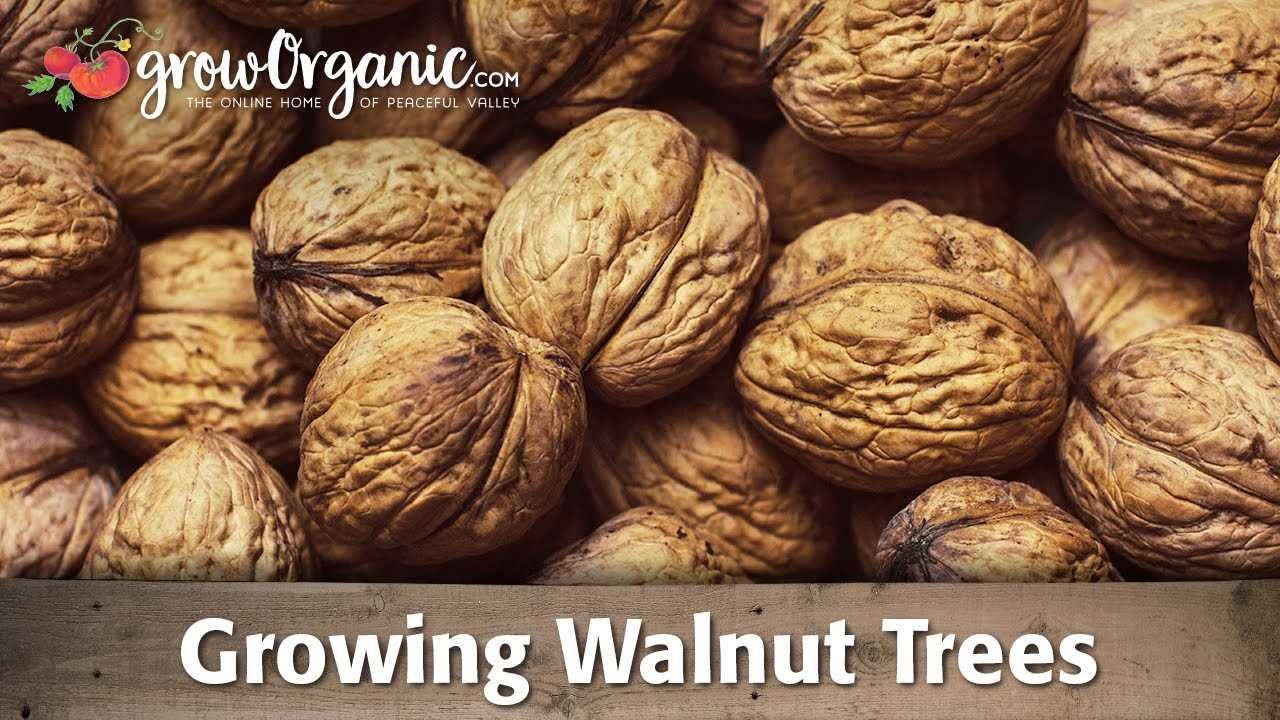
- Walnut trees need regular watering, especially during the first few years of growth. The soil should be kept moist, but not waterlogged.
- Check the soil moisture by sticking your finger about an inch into the ground. If it feels dry, it’s time to water the tree. If it feels damp, wait a few more days before watering.
- Water deeply and thoroughly to ensure the water reaches the deeper roots. A slow, steady trickle of water is ideal.
- During hot and dry periods, increase the frequency of watering to prevent the tree from drying out.
Fertilizing
- Walnut trees require regular fertilization to provide them with the necessary nutrients for growth.
- Use a balanced fertilizer with a ratio of nitrogen (N), phosphorus (P), and potassium (K) such as a 10-10-10 or 20-20-20 fertilizer.
- Apply the fertilizer in early spring before the tree begins its active growth and again in late summer to promote healthy root development.
- Follow the instructions on the fertilizer package for the correct application rates.
- Avoid fertilizing too close to the trunk of the tree to prevent burning the roots.
Proper watering and fertilization will help your walnut trees grow strong and healthy, ensuring a bountiful harvest in the years to come.
Question-answer:
What is stratification?
Stratification is a process of subjecting seeds to a period of cold and moist conditions to break their dormancy and promote germination.
Can walnuts be grown from nuts without stratification?
Yes, walnuts can be grown from nuts without stratification.
What are the advantages of growing walnuts from nuts without stratification?
The main advantage is saving time, as stratification can take several months. Additionally, it eliminates the need for special equipment or techniques.
How should I choose walnuts for planting?
When choosing walnuts for planting, select mature nuts that are free from diseases or pests. Look for nuts with intact shells and avoid those that are damaged or moldy.
What is the best time to plant walnuts?
The best time to plant walnuts is in the late fall or early winter, after the nuts have fully ripened and fallen from the tree.







